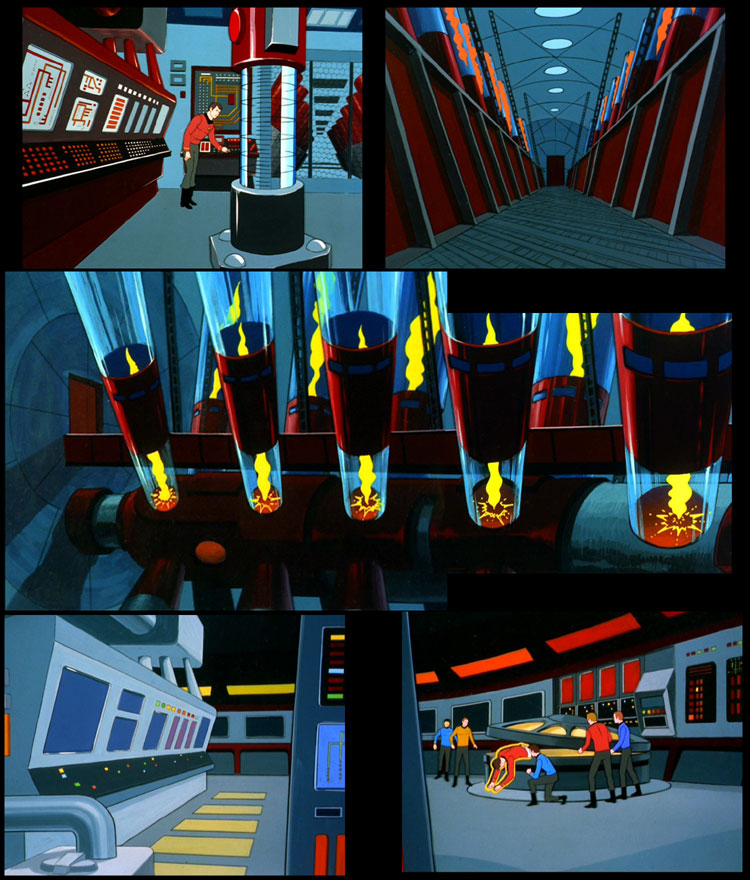I don't know if a wireless transfer system would be all that practical on the Enterprise.
Those reactors put out so much power that a wireless system would probably have to be transmitted solely through a vacuum as the energy beam would probably superheat the air into high energy plasma if it was fired into the air. I suppose directing a beam through a vacuum would be easier than the power transfer conduits used on the Enterprise however.
Well, we know that the Enterprise does transmit power over great distances (and through thousands of feet of atmosphere) from
The Cage...
Briefing room dialog...
Tyler: Why aren’t we doing anything? That entry may have stood up against hand lasers, but we can transmit the ship's power against it, enough to blast half a continent.
Number One: Engineering deck will rig to transmit ship's power. We'll try blasting through that metal.
and...
Talios surface dialog...
Number One: All circuits engaged, Mr. Spock.
Spock (on Enterprise): Standing by, Number One.
Number One: Take cover.
Spock (on Enterprise): Ten, nine, eight, seven, six, five, four, three, two, one.
Number One: Increase to full power.
Number One: Can you give us any more?
Spock (on Enterprise): Our circuits are beginning to heat. We'll have to cease power.
Number One: Disengage!
Most type of electromagnetic waves we don't see or feel, and they only really register to us at certain wavelengths. But we still make use of those waves by having transmitters and receivers.
What if the Enterprise transmits energy in a way that has no effect on most types of matter. What if the only thing that can transmit or receive (convert back to a usable form) this energy is dilithium.
The dilithium crystals and paddles might be how energy is transferred through the ship and even how the warp nacelles are powered. And a dilithium crystal smaller than a grain of sand might be how most free standing equipment is powered on the Enterprise. There might even be a crystal of that type on tricorders for re-powering (which the Gorn locked onto to turn Spock's tricorder into an explosive device).
If the crystals fail you could come up with a bypass to get power from place to place... unless you burn out all those circuits like in
Mudd's Women.
So, here we are in the early 21st century... we don't know of dilithium or what it's properties are, so we don't know about how channeling energy into these crystals converts it into another forum that can be converted back with another crystal. And unless set to a very specific specification, that energy passes harmlessly through nearly everything (and maybe phasers are what happens when it is beamed in the non-harmless way).
Several hundred years ago there was no nuclear power, there was no radio, there wasn't a lot of technologies we take for granted today... several hundred years from now, who knows? With what we know today, sure, a wireless transfer system wouldn't be all that practical, but fortunately
Star Trek isn't set in today's world.


